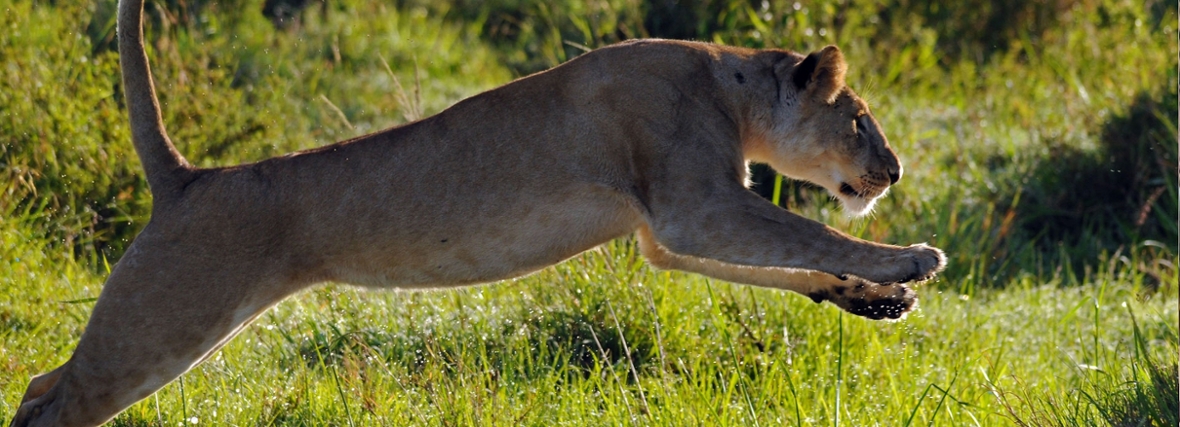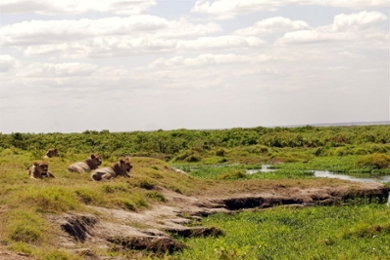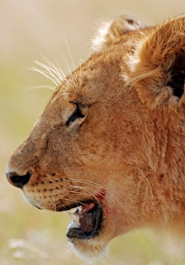
How genetic research contributes to effective lion conservation
Human measures to protect lions have an impact on the genetic health of populations. Leiden and Kenyan scientists discovered this by analysing the DNA of 171 Kenyan lions. ‘By fencing reserves, for example, the chance of inbreeding increases.’ With the knowledge and tools from the research, management authorities in Kenya can better protect their valuable wildlife in the future.
To keep lion populations healthy and thriving and to avoid conflicts with local communities, wildlife management is necessary. In Kenya, this is the responsibility of the Kenya Wildlife Service (KWS). Together with scientists from Leiden University and the Wildlife Research and Training Institute in Kenya , KWS is now mapping the genetic diversity of their lion populations. The aim is to assess the impact of management interventions on lion diversity to date and to devise more effective ways to conserve lions in the future.
Why diversity is important
‘A healthy population needs genetic diversity,’ explains Laura Bertola, who worked as a PhD in Leiden at the time of the research. ‘This increases the resilience and long-term survival chances of a species. It reduces, for example, the likelihood of inbreeding and enables a population to adapt to changes, such as climate change or diseases.’
Clear north-south distribution
Based on the genetic research, scientists saw that the populations in the north and south clearly differed from each other. ‘Such differences originally arise from natural barriers,’ says supervisor Hans de Iongh. ‘Think, for example, of rivers or mountains. Recent changes in the environment and climate and the presence of humans also play a role. But we also saw the effects of management measures.’

Problem lions mixing with other populations
‘People are encroaching more and more into the habitat of wild animals,’ says PhD candidate Monica Chege. 'In Kenya, lions are therefore increasingly coming into conflict with local communities. One of the ways that KWS intervenes is by capturing the problem lion and relocating it to a place where they are likely to cause less conflict.’
In the past, many problem lions were, for example, relocated to Tsavo National Park. Here, they subsequently breed with local lions. Chege: ‘We see this reflected in the genetic composition of this population. There is mixing with genes from lions from outside.’ Whether this is good or bad for the lions is a difficult issue. Bertola: ‘But by mixing all different populations, you ultimately lose diversity. That’s why we try to maintain the existing structures.’
Fences limit natural dispersal
Another way to avoid conflict is by fencing reserves. The researchers also observed this in the genetic research. ‘In the fenced populations of Lake Nakuru National Park and Solio Ranch, we saw less genetic diversity,’ says Chege. ‘Most likely because lions, due to the fences, can no longer disperse naturally. As a result, there is less contact with lions from outside their own population.’

Samples collection
The researchers collected 171 lion samples from all over Kenya. Former KWS employee Francis Lesilau started the collection process. He obtained his PhD in Leiden in 2019 for his lion research. ‘Samples are in the form of hair, blood, skin, and/or tissue. We collected them from different KWS stations and National Parks or from lions that were being translocated or treated.’
Monica Chege further expanded the collection so that all important lion populations in the country were represented. Laura Bertola and Klaas Vrieling then developed a special genetic panel tailored to lions. Bertola: ‘With this, we were able to analyse the samples. You can use it to map populations, assess possible risks of inbreeding. Or, for example, assess how well certain nature reserves are connected. It can also help trace the origin of illegally poached products.’
‘Better connect national parks’
The new approach is a valuable tool for Kenyan nature conservation. Chege: 'We hope it helps protect lion diversity in Kenya as effectively as possible. For example, by better taking into account the different genetic groups and their unique evolutionary history in management.’
‘For example, by not translocating problem lions over too long distances,’ says her supervisor Geert de Snoo. ‘Or by regularly exchanging lions in fenced reserves with other lions to prevent inbreeding.’ Chege: ‘We also need to better connect wildlife habitats. This is crucial to keeping the Kenyan lion genetically healthy so that we can enjoy this majestic wildlife icon for generations to come.’
Text: Hilde Pracht
Photo's: Laura Bertola
Further reading
Read the scientific paper in Evolutionairy Applications / Volumn 17, Issue 3: Genetic diversity of lion populations in Kenya: Evaluating past management practices and recommendations for future conservation actions
